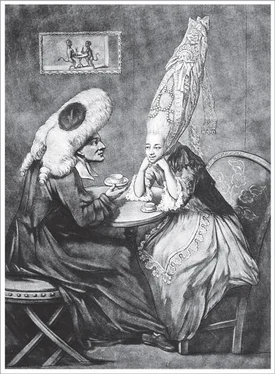Bill Bryson - At Home
Здесь есть возможность читать онлайн «Bill Bryson - At Home» весь текст электронной книги совершенно бесплатно (целиком полную версию без сокращений). В некоторых случаях можно слушать аудио, скачать через торрент в формате fb2 и присутствует краткое содержание. Жанр: Старинная литература, на английском языке. Описание произведения, (предисловие) а так же отзывы посетителей доступны на портале библиотеки ЛибКат.
- Название:At Home
- Автор:
- Жанр:
- Год:неизвестен
- ISBN:нет данных
- Рейтинг книги:4 / 5. Голосов: 1
-
Избранное:Добавить в избранное
- Отзывы:
-
Ваша оценка:
- 80
- 1
- 2
- 3
- 4
- 5
At Home: краткое содержание, описание и аннотация
Предлагаем к чтению аннотацию, описание, краткое содержание или предисловие (зависит от того, что написал сам автор книги «At Home»). Если вы не нашли необходимую информацию о книге — напишите в комментариях, мы постараемся отыскать её.
At Home — читать онлайн бесплатно полную книгу (весь текст) целиком
Ниже представлен текст книги, разбитый по страницам. Система сохранения места последней прочитанной страницы, позволяет с удобством читать онлайн бесплатно книгу «At Home», без необходимости каждый раз заново искать на чём Вы остановились. Поставьте закладку, и сможете в любой момент перейти на страницу, на которой закончили чтение.
Интервал:
Закладка:
What killed the Orcadians was not dietary deficiency but disease. People living together are vastly more likely to spread illness from household to household, and the close exposure to animals through domestication meant that flu (from pigs or fowl), smallpox and measles (from cows and sheep), and anthrax (from horses and goats, among others) could become part of the human condition, too. As far as we can tell, virtually all of the infectious diseases have become endemic only since people took to living together. Settling down also brought a huge increase in “human commensals”—mice, rats, and other creatures that live with and off us—and these all too often acted as disease vectors.
So sedentism meant poorer diets, more illness, lots of toothache and gum disease, and earlier deaths. What is truly extraordinary is that these are all still factors in our lives today. Out of the thirty thousand types of edible plants thought to exist on Earth, just eleven—corn, rice, wheat, potatoes, cassava, sorghum, millet, beans, barley, rye, and oats—account for 93 percent of all that humans eat, and every one of them was first cultivated by our Neolithic ancestors. Exactly the same is true of husbandry. The animals we raise for food today are eaten not because they are notably delectable or nutritious or a pleasure to be around, but because they were the ones first domesticated in the Stone Age.
We are, in the most fundamental way, Stone Age people ourselves. From a dietary point of view, the Neolithic period is still with us. We may sprinkle our dishes with bay leaves and chopped fennel, but underneath it all is Stone Age food. And when we get sick, it is Stone Age diseases we suffer.
II
If, ten thousand years ago, you had been asked to guess which area of the world would be the seat of the greatest future civilizations, you would probably have settled on some part of Central or South America on the basis of the amazing things they were doing with food there. Academics call this portion of the New World Mesoamerica, an accommodatingly vague term that could fairly be defined as Central America plus as much or as little of North and South America as are needed to support a hypothesis.
Mesoamericans were the greatest cultivators in history, but of all their many horticultural innovations none was more lastingly important or unexpected than the creation of maize, or corn as it is known where I come from.* We still don’t have any idea how they did it. If you look at primitive forms of barley, rice, or wheat set beside their modern counterparts, you can see the affinities at once. But nothing in the wild remotely resembles modern corn. Genetically, its nearest relative is a wispy grass called teosinte, but beyond the level of chromosomes there is no discernible kinship. Corn grows into a hefty cob on a single stalk and its grains are encased in a stiff, protective husk. An ear of teosinte, in comparison, is less than an inch long, has no husk, and grows on a multiplicity of stems. Teosinte is almost valueless as a food; one kernel of corn is more nutritious than a whole ear of teosinte.
It is beyond us to divine how any people could have bred cobs of corn from such a thin and unpropitious plant—or even thought to try. Hoping to settle the matter once and for all, food scientists from around the world convened in 1969 at a conference on the origin of corn at the University of Illinois, but the debates grew so vituperative and bitter, and at times so personal, that the conference broke up in confusion and no papers from it were ever published. Nothing like it has been attempted since. Scientists are now pretty sure, however, that corn was first domesticated on the plains of western Mexico, and are in no doubt, thanks to the persuasive wonders of genetics, that somehow it was coaxed into being from teosinte, but how it was done remains as much of a mystery as it ever did.
However they did it, the Mesoamericans created the world’s first fully engineered plant—a plant so thoroughly manipulated that it is now wholly dependent on us for its survival. Corn kernels do not spontaneously disengage from their cobs, so unless they are deliberately stripped and planted, no corn will grow. Had people not been tending it continuously for these thousands of years, corn would be extinct. The inventors of corn not only created a new kind of plant, they also created—conceived from nothing really—a new type of ecosystem that existed nowhere in their world. In Mesopotamia natural meadows grew everywhere already, so cultivation was largely a matter of transforming natural grain fields into superior managed ones. In the arid scrubs of Central America, however, fields were unknown. They had to be created from scratch by people who had never seen such a thing before. It was like someone in a desert imagining lawns.
Today corn is far more indispensable than most people realize. Cornstarch is used in the manufacture of soda pop, chewing gum, ice cream, peanut butter, library paste, ketchup, automobile paint, embalming fluid, gunpowder, insecticides, deodorants, soap, potato chips, surgical dressings, nail polish, foot powder, salad dressing, and several hundred things more. To borrow from Michael Pollan, author of The Omnivore’s Dilemma , it is not so much as if we have domesticated corn as it has domesticated us.
The worry is that as crops are engineered to a state of uniform genetic perfection, they will lose their protective variability. When you drive past a field of corn today, every stalk in it is identical to every other—not just extremely similar, but eerily, molecularly identical. Replicants live in perfect harmony since none can outcompete any others. But they also have matching vulnerabilities. In 1970, the corn world suffered a real fright when a disease called southern corn-leaf blight started killing corn across America and it was realized that practically the entire national crop was planted from seeds with genetically identical cytoplasm. Had the cytoplasm been directly affected or the disease proved more virulent, food scientists all over the world might now be scratching their heads over ears of teosinte and we would all be eating potato chips and ice cream that didn’t taste quite right.
Potatoes, the other great food crop of the New World, present an almost equally intriguing batch of mysteries. Potatoes are from the nightshade family, which is of course notoriously toxic, and in their wild state they are full of poisonous glycoalkaloids—the same stuff, at lower doses, that puts the zip in caffeine and nicotine. Making any wild potatoes safe to eat required reducing the glycoalkaloid content to between one-fifteenth and one-twentieth of its normal level. This raises a lot of questions, beginning most obviously with: How did they do it? And while they were doing it, how did they know they were doing it? How do you tell that the poison content has been reduced by, say, 20 percent or 35 percent or some other intermediate figure? How do you assess progress in such a process? Above all, how did they know that the whole exercise was worth the effort and that they would get a safe and nutritious foodstuff in the end?
Of course, a nontoxic potato might equally have mutated spontaneously, saving them generations of experimental selective breeding. But if so, how did they know that it had mutated and that out of all the poisonous wild potatoes around them here at last was one that was safe to eat?
The fact is, people in the ancient world were often doing things that are not just surprising but unfathomable.
III
While Mesoamericans were harvesting corn and potatoes (and avocados and tomatoes and beans and about a hundred other plants we would be desolate to be without now), people on the other side of the planet were building the first cities. These are no less mysterious and surprising.
Читать дальшеИнтервал:
Закладка:
Похожие книги на «At Home»
Представляем Вашему вниманию похожие книги на «At Home» списком для выбора. Мы отобрали схожую по названию и смыслу литературу в надежде предоставить читателям больше вариантов отыскать новые, интересные, ещё непрочитанные произведения.
Обсуждение, отзывы о книге «At Home» и просто собственные мнения читателей. Оставьте ваши комментарии, напишите, что Вы думаете о произведении, его смысле или главных героях. Укажите что конкретно понравилось, а что нет, и почему Вы так считаете.












